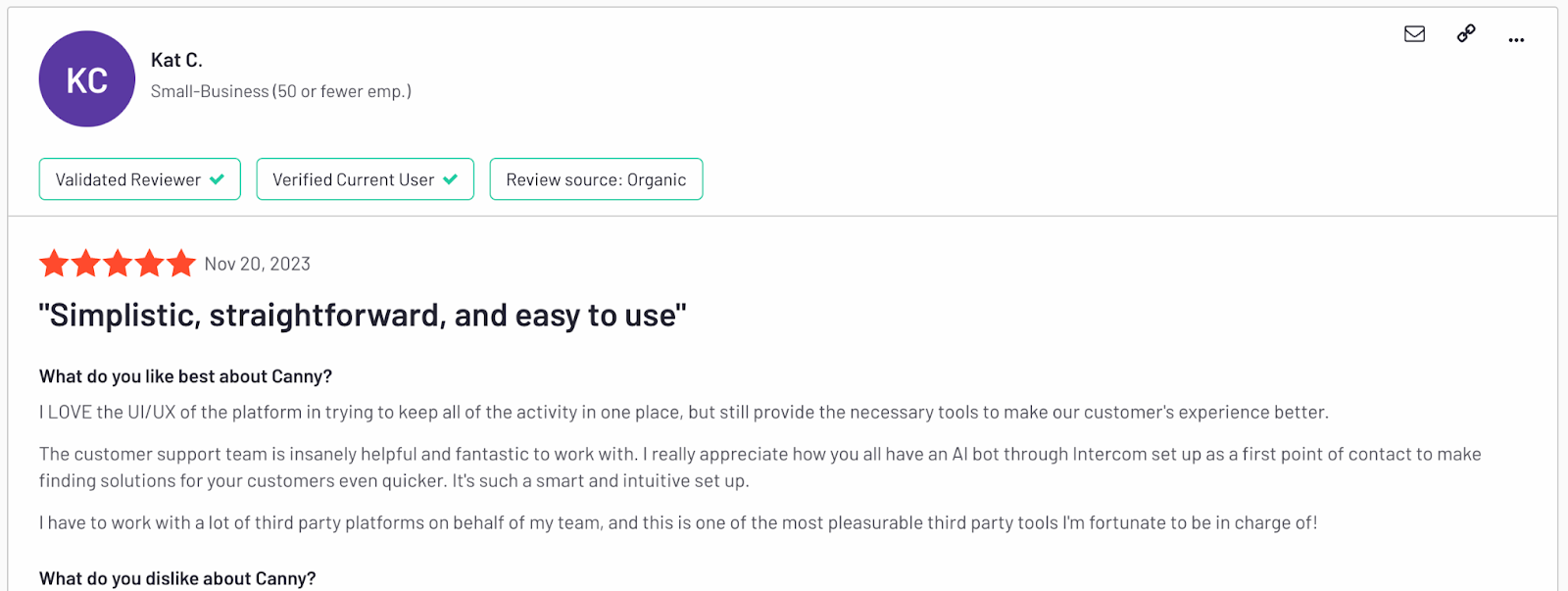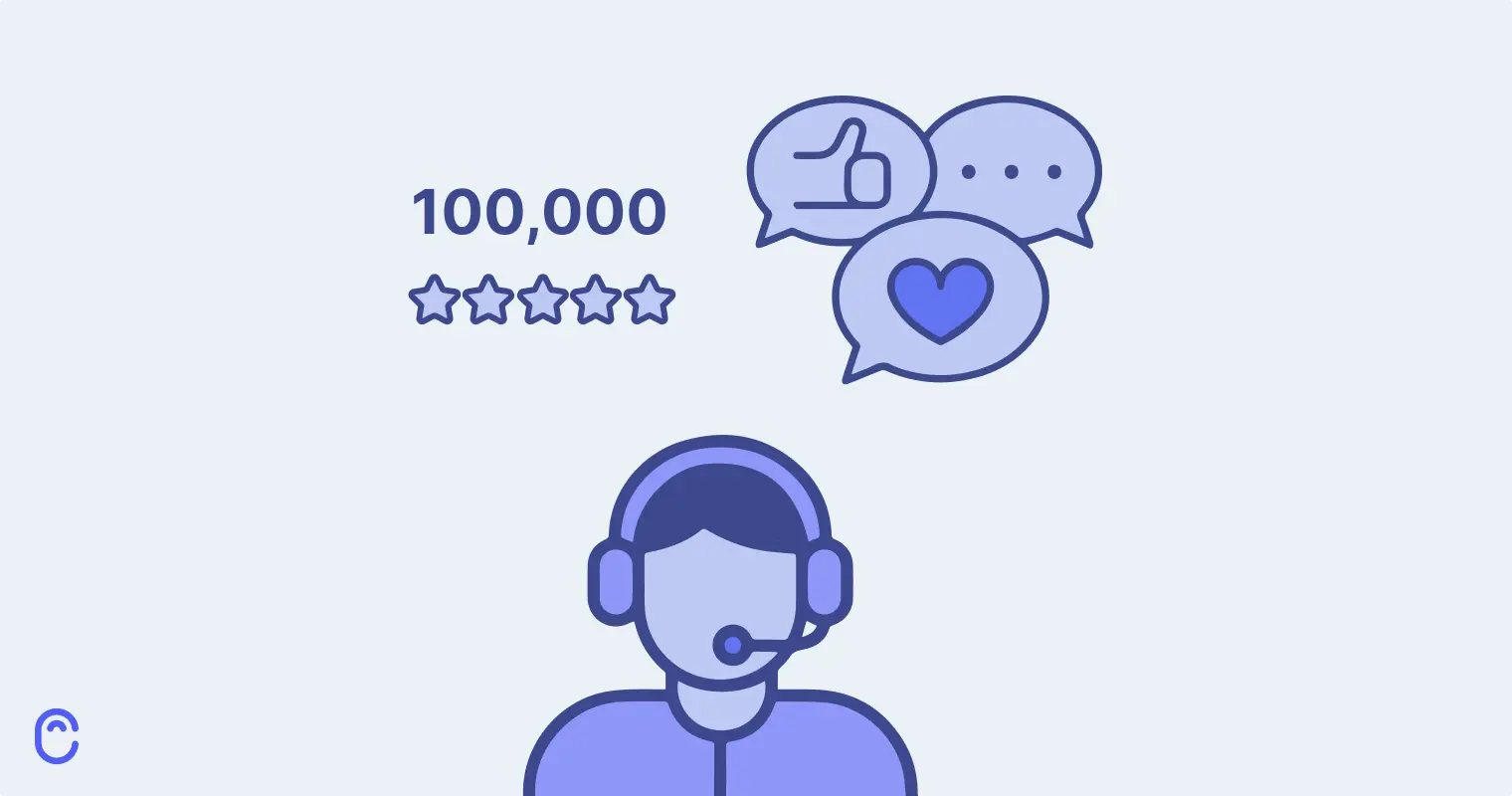I have interacted directly with a client over 100,000 times. The last 25,000 or so interactions have been noticeably different. They were better. And it’s because I got something every support team needs: a dedicated tool for customer feedback.
A few weeks ago I closed my 25,000th support ticket in Intercom. I want to share a bit about my customer support strategy and how it transformed over the years.
The before times
For the first 75,000 interactions, when I got a customer inquiry with feedback, I had nothing in my arsenal but a spreadsheet. I would track their comments there with a quick note and maybe a link to the call/transcript. Customer feedback accounted for up to 20% of customer interactions, so that spreadsheet soon became an unwieldy mess. I had to choose between:
- Keeping it clear, merging suggestions, and tallying votes or…
- Actually communicating and solving a customer issue
The latter always took priority, so the data was incomplete at best.
Then, I started managing my own support team. Asking my customer care team to try tracking feedback using a similar manual system was almost pointless. Tagging conversations was helpful but gave us no meaningful insight into the profiles of the clients making requests. I spent entire days manually poring over each customer interaction.
When the planning meeting came around, and I presented my findings, devs were skeptical. They needed to know which accounts these top requests were coming from. I’d have to say something like:
“I can stay late tomorrow and crunch the numbers, but I didn’t have time to compile all that data. And it’s not something I can do regularly unless that is my only job.”
As a result, the customer service team spent countless work hours on gimmicky features that were rarely used. Meanwhile, the core functionality our users needed fell by the wayside. You can imagine what that did to the customer satisfaction. My pulse on the frontlines often validated my initial instincts, but I lacked the data to back them up.
A few years of wasted development cycles passed. Eventually, my hunches were much more seriously considered. But they were still only hunches.
To sum up, my daily life looked something like this:
- Misdirected development efforts: we built features that didn’t resonate with users.
- Customer happiness declined: their valuable feedback felt lost in the abyss.
- Wasted resources: we spent countless hours manually digging through conversations.
Frustration is often the name of the game when scaling up a support team. Little did I know, it didn’t have to be.
Enter feedback tracking
When I first used Canny, I immediately wished I had a time machine. It was a tool I had needed my whole career. It felt like I had regrown a limb I didn’t know I had lost.
Suddenly, that 20% of my interactions could be handled by the user clicking a single button and upvoting an existing feature request. And for the few who still wrote in with feedback, I could easily deflect it to the app. However, unlike other deflection methods, this was a massive improvement in the customer experience as well. Now, they weren’t just given empty words assuring them they’d been heard. They had a verifiable URL to reference their input and track its status.
I could now easily submit bugs and suggestions I ran into as an employee. I didn’t have to escalate things to tier 2 dev support or ask if we were aware. I could just throw them into Canny for easy tracking and triage.
When it came time to plan, I could now represent the voice of the customer with actual data — data that didn’t take days to compile. In fact, with the roadmap function, the voice of the customer at Canny is now almost fully automated.

In my previous role, we had three people answering support tickets and one doing analysis full-time for around 13,000 existing customers. My current role at Canny requires just me for that same figure. And it’s better — not just for the company, but for the end-users. Don’t take my word for it — I work here. Head to G2 or Capterra to see what actual users say about Canny’s support.

It’s easy to overlook support and assume it’s a necessary evil. In reality, support is the rudder of your ship. It can sit down there collecting barnacles that need the occasional sick day. It can get you through the occasional storm. Or it can guide your organization to where your clients tell you they need you to go. Support is often the key to customer retention.
If you want to improve any aspect of your organization, a dedicated support and customer service team that is paying attention will have some valuable insights for you. For example:
- Should we offer a French version of the app?
- We handle a lot more tickets in Spanish than in French.
- Should we prioritize that integration with Salesforce?
- We get a lot more people asking about HubSpot.
- How do we decrease churn?
- Paying users and prospects are usually concerned with ____.
The best part is – they just have to use Canny. It allows them to answer each question in seconds.
Effect on customers
Using a customer feedback tool also improved the customer experience.
Good customer service starts with listening. When a client takes time to submit a feature request, they want to be heard.

Great customer service is about acting on feedback. Just providing your customers with a way to submit feedback and saying “thanks for your feedback” isn’t enough. If customer loyalty is your goal, you have to exceed customer expectations, not just satisfy customer needs.
Excellent customer service happens when users feel valued. When they know their opinion matters. And when their ideas turn into features. That creates a really satisfied customer.
Of course, none of that matters when users don’t know about it. But if they see an update and know they affected this change, they feel a special connection to the brand. We call this customer loyalty. That drives up the net promoter score and makes for a happy customer. That’s what we call exceptional customer service.

When I got my hands on Canny, I could suddenly do all that and more. Customer relationship management became simpler for the customer success team. Customer satisfaction score soared.
I’ve learned a lot about building a customer support strategy throughout the years. Here are a few best practices.
How to build a customer support strategy
Knowing what I know now, this is how I’d build a customer support strategy from scratch.
1. Make a plan
I’d start with the overall strategy and ask myself:
- What support channels will we provide?
- Who is responsible?
- What will we do with feedback/complaints/bug reports?
- What metrics are important?
2. Get the right tools
Pick a support tool for your team. We use Intercom for example. It lets us chat, create tickets, build help docs, and more.
Then, add other tools that will streamline feedback even further. A dedicated feedback tool, like the one I found in Canny, is a game-changer. It streamlines collecting, analyzing, and acting on customer feedback. This isn’t about replacing your team with software. It’s about giving them superpowers.
3. Actively listen
Listening is the cornerstone of great support. But active listening? That’s where the magic happens. Encourage your team to not just hear but understand what customers are saying. This means going beyond the surface level and really digging into the problems your customers face.
4. Turn feedback into action
Listening is only half the battle. The real test is turning that feedback into action. This means prioritizing feedback that aligns with your business goals and addressing it in your product or service updates. Show your customers you’re not just listening, but you’re also making changes based on their input. Making them feel heard can really boost satisfaction.
5. Measure and iterate
What gets measured gets managed. Track how changes based on customer feedback affect your customer satisfaction score and support metrics. Use this data to continuously refine your strategy, ensuring it always serves your customers’ evolving needs. In my job, I look at the following:
- Comparing churn rates of users who have feedback attributed vs those who don’t
- NPS scoring
- Support satisfaction follow-up surveys
6. Empower your team
Lastly, empower your support team. They’re not just problem solvers; they’re your frontline strategists. Provide them with the training, tools, and authority to make decisions that will improve customer satisfaction. When your team feels empowered, they’re more engaged and effective.
Lessons from 100,000 support tickets
My journey with 100,000 customer talks taught me a lot. Using a tool like Canny changed everything. We went from drowning in feedback to using it smartly. This wasn’t just easier for us; it made our service better and our customers happier.
We learned key lessons. Listen well, act on feedback, and keep checking the results. This makes customers feel heard and builds loyalty.
Looking ahead, customer-focused support is key. It’s more than solving problems; it’s about using what customers tell us to improve. This approach has made our support team a big part of our success.
Let’s go beyond fixing issues to understanding and surprising our customers.
Ready to transform your customer service strategy? Invest in a dedicated feedback tool and empower your team to become data-driven champions for your customers.






